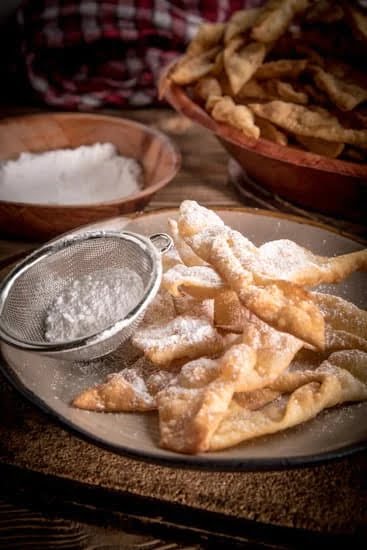Brick Mould Cake Decorating has become an increasingly popular trend in the world of cake design. With its unique and eye-catching appearance, this technique adds a touch of charm and elegance to any occasion. Whether it’s a birthday celebration, wedding, or other special event, brick mould cakes are sure to impress guests with their stunning design.
This article explores the rise of brick mould cake decorating and delves into the reasons behind its popularity. From the intricate details to the one-of-a-kind textures, these cakes have captured the hearts and taste buds of many. As more and more people seek out creative ways to personalize their celebrations, brick mould cake decorating has emerged as a standout choice for those who want something truly extraordinary.
In this article, we will discuss everything you need to know about brick mould cake decorating. We will explore different types, shapes, and sizes of brick moulds that can be used to create these unique designs. Additionally, we will provide tips on preparing the perfect cake batter for optimal texture and flavor. Furthermore, we will take you step-by-step through using a brick mould – teaching you all the techniques, tools, and tricks needed for success.
So whether you’re a novice baker looking to try something new or an experienced decorator searching for fresh inspiration, this article is for you. Find out how to achieve beautifully designed brick mould cakes that are sure to leave a lasting impression on your guests. Get ready to embark on a delightful journey as we uncover the secrets behind this captivating trend in cake decoration.
Choosing the Right Brick Mould for Your Cake
Choosing the right brick mould for your cake is an important step in achieving the desired look and design. There are various types, shapes, and sizes of brick moulds available, allowing you to create unique and eye-catching cake decorations. Here are some tips to help you choose the right brick mould for your cake:
- Consider the type of cake: Before choosing a brick mould, it’s essential to consider the type of cake you will be making. Different types of brick moulds work best with certain cake textures and flavors. For example, a silicone or plastic brick mould may be more suitable for a light and fluffy sponge cake, while a metal brick mould may work better with a denser chocolate or fruitcake.
- Explore different shapes and sizes: Brick moulds are available in various shapes and sizes, allowing you to create different designs and patterns on your cakes. Some common shapes include rectangular, square, and round brick moulds. You can also find specialty brick moulds in shapes like hearts, diamonds, or even letters of the alphabet. Consider the theme or occasion for your cake when choosing the shape to complement the overall design.
- Consider the size of your cake: The size of your cake will determine the size of the brick mould you need. If you’re making a small individual-sized cake, miniature brick moulds would be ideal. However, if you’re baking a large tiered cake, larger-sized brick moulds will give better results.
- Quality and durability: When selecting a brick mould, it’s important to choose one that is made from high-quality materials and is durable enough to withstand repeated use. Silicone or non-stick coated metal options are popular choices as they ensure easy removal of the cake from the mould without damaging its shape.
By considering these factors when choosing a brick mould for your cake decorating project, you can ensure that you have selected the perfect one that suits both your design and practical needs.
Preparing the Cake Batter
One of the most important steps in creating a successful brick mould cake is preparing the cake batter. The texture and consistency of the cake will greatly affect the final result, so it’s essential to get it right. Here are some tips to ensure that you achieve a perfectly textured base for your brick mould cake.
First, it’s important to choose the right type of cake for your brick mould design. A dense and sturdy cake, such as a pound cake or a sponge cake, works best for this type of decoration. These types of cakes can withstand the weight and pressure of being pressed into the brick mould without crumbling or falling apart.
To create a moist and flavorful base, make sure to properly measure your ingredients. Baking is a science, and accurate measurements are crucial for achieving the desired results. Use a kitchen scale or measuring cups and spoons to ensure that you’re using the correct amount of flour, sugar, eggs, butter, and any other ingredients called for in your recipe.
Another key factor in achieving a perfect textured base is properly mixing the batter. Overmixing can result in a dense and tough cake, while undermixing may lead to uneven distribution of ingredients and an inconsistent texture. Follow your recipe’s instructions carefully when it comes to mixing times and techniques. Be gentle when folding in dry ingredients or adding liquids, as too vigorous mixing can incorporate excess air into the batter which can cause the cake to rise unevenly.
By paying attention to these tips for preparing your cake batter, you’ll be well on your way to creating a perfectly textured base for your brick mould cake. Remember that practice makes perfect – don’t get discouraged if your first attempt isn’t flawless. Experiment with different recipes and techniques until you find what works best for you. With time and practice, you’ll be able to create beautiful brick mould cakes that are both visually stunning and delicious.
Step-by-Step Guide to Using a Brick Mould
Brick Mould Cake Decorating has become a popular trend in the world of cake design. This unique technique creates an eye-catching and realistic brick texture on cakes, adding depth and dimension to any design. In this section, we will dive into the step-by-step process of using a brick mould, including the techniques, tools, and tricks that will help you achieve stunning results.
Techniques
To begin, make sure your cake is properly prepared and leveled before applying the brick mould. The surface should be smooth and free from any crumbs or imperfections. Once your cake is ready, it’s time to start using the brick mould.
Press the mould gently onto the cake to create an impression of bricks. Be careful not to press too hard or move the mould around, as this may distort the pattern. Repeat this process until you’ve covered the desired area of your cake.
Tools
The key tool for brick mould cake decorating is obviously the brick mould itself. There are various types available on the market, ranging from silicone to plastic. Silicone moulds are usually preferred as they are flexible and easier to work with. Additionally, having a fondant smoother or rolling pin will come in handy when pressing down on the mould and smoothing out any air bubbles that may have formed.
Tricks
One important trick for using a brick mould effectively is lightly dusting it with cornstarch or powdered sugar before placing it on the cake. This helps prevent sticking and ensures a clean release every time you remove the mould from the cake surface.
Another trick is to work quickly but carefully to avoid any mishaps or mistakes while applying the bricks. It’s also helpful to periodically clean off any excess batter or icing that may accumulate on the mould during use.
By following these techniques, utilizing appropriate tools, and employing useful tricks, you can create stunning brick patterns on your cake that will impress your friends and family. In the next section, we will explore some creative and unique brick mould cake designs to inspire your own creations.
Decorating Ideas and Inspiration
When it comes to brick mould cake decorating, the possibilities are endless. This section will provide you with a range of creative and unique designs that can inspire your own creations. Whether you’re looking for ideas for a birthday cake, wedding cake, or any other special occasion, these designs will add a touch of charm and elegance to your dessert.
- Rustic Charm: Create a rustic brick mould cake design by using earthy tones such as brown and beige for the bricks. Add subtle shading and texture to make the bricks look weathered. You can then decorate the top of the cake with edible flowers or berries to complete the natural look.
- Modern Elegance: For a more modern and sophisticated design, go for sleek lines and clean edges on your brick mould cake. Use a metallic color scheme such as silver or gold for the bricks to give it an elegant touch. To enhance the overall look, consider adding geometric patterns or edible pearls as accents.
- Whimsical Wonderland: If you’re planning a whimsical themed cake, why not create a magical fairy-tale inspired design with your brick mould? Paint the molds in vibrant colors like pink, purple, and blue and add decorative details such as butterflies or unicorns made from fondant or chocolate.
- Beach Vibes: Bring the beach vibes to your dessert table by creating a brick mould cake that resembles sandcastle buckets. Brightly color fondant in shades of blue for the ocean waves and tan for the sandy bricks. Finish off with cute edible seashells or sugar starfish decorations.
- Romantic Roses: Turn your brick mould cake into a romantic centerpiece by covering it in delicate fondant roses. Choose soft pastel shades such as blush pink or ivory for an elegant touch. Add some green leaves for contrast and use edible glitter to give it a sparkling finish.
Remember, these designs are just the tip of the iceberg. Let your creativity run wild and experiment with different colors, edible decorations, and techniques to create your own unique brick mould cake design that will leave everyone in awe.
Working with Fondant
Fondant is a popular choice for covering brick mould cakes because it provides a smooth and seamless finish. However, working with fondant can be challenging, especially when trying to achieve a perfect brick texture. In this section, we will explore some tips and tricks that can help you achieve a flawless fondant covering for your brick mould cake.
To start, it’s important to properly prepare your fondant before using it to cover your cake. Kneading the fondant until it becomes soft and pliable is crucial in order to avoid any cracks or tears when applying it to the cake. If the fondant feels too dry, you can add a small amount of vegetable shortening to moisten it.
When rolling out the fondant, make sure to use powdered sugar or cornstarch on your work surface to prevent sticking. Start by rolling out a piece of fondant that covers the top of your cake and gently drape it over the cake using a rolling pin or your hands. Smooth out any wrinkles or air bubbles by gently patting the fondant with your fingertips.
For achieving the brick texture on your fondant covering, there are several techniques you can try. One method is using an impression mat specifically designed for creating brick patterns. Simply press the mat onto the fondant-covered cake and carefully remove it to reveal a realistic brick texture. Another option is using a textured rolling pin that imprints a brick pattern directly onto the fondant as you roll it out.
To create more dimension and realism, you can use edible coloring powders or gel colors mixed with vodka to paint shadows and highlights onto your faux bricks. This technique adds depth and character to the finished product.
Working with fondant requires patience and practice, but with these tips and tricks, you’ll be able to achieve smooth and seamless brick mould cake coverings that will impress everyone at your next special occasion.
Essential Equipment and Accessories
When it comes to mastering brick mould cake decorating, having the right equipment and accessories is essential. These tools not only make the process easier and more efficient but also allow for greater precision and creativity in your designs. Whether you are just starting out or have been decorating cakes for years, there are a few must-have items that every brick mould cake decorator should have in their toolkit.
One of the most important tools for brick mould cake decorating is a high-quality silicone mould in the shape and size of bricks. This will ensure that your cakes turn out with realistic and consistent brick textures. Look for a mould that is flexible, durable, and easy to clean. There are various sizes and shapes available on the market, so choose one that best suits your design needs.
Alongside the brick mould, a sturdy offset spatula is an indispensable tool for achieving smooth and even frosting on your cakes. This angled spatula allows you to smoothly spread frosting on all sides of the cake, ensuring a seamless finish. Additionally, piping bags with different tips are crucial for creating various decorative elements such as borders, flowers, or lettering. Wilton’s #12 round tip and #352 leaf tip are particularly useful for brick mould cake decorations.
In terms of accessories, a turntable is highly recommended as it allows you to easily rotate your cake while decorating. This ensures that you can reach all angles without straining yourself or compromising the quality of your design. A bench scraper is another handy accessory that helps achieve straight edges on the sides of the cake by smoothing excess frosting or fondant.
| Equipment/Accessory | Description |
|---|---|
| Silicone Brick Mould | A flexible mold in the shape and size of bricks, allowing for realistic texture and consistent design. |
| Offset Spatula | An angled spatula for smooth and even frosting application on all sides of the cake. |
| Piping Bags with Tips | Bags with different tips for creating decorative elements such as borders, flowers, or lettering. |
| Turntable | A rotating base that helps reach all angles while decorating without straining. |
| Bench Scraper | An accessory used to achieve straight edges on the sides of the cake by smoothing excess frosting or fondant. |
Having these essential tools and accessories will set you up for success in mastering brick mould cake decorating. They will enable you to create beautifully textured cakes with professional-looking finishes. Remember to invest in high-quality items that are durable, easy to clean, and comfortable to use. With practice and the right tools, you’ll be able to craft stunning brick mould cake designs that will impress your family, friends, and clients.
Troubleshooting and Common Challenges
Uneven Baking
One of the common challenges when using a brick mould for cake decorating is achieving an even bake. Sometimes, certain areas of the cake may be overcooked while others remain underdone. To prevent this, it’s crucial to ensure that the batter is spread evenly in the mould before baking.
Use a spatula or the back of a spoon to smooth out the batter and make sure it reaches all corners of the mould. Additionally, rotating the cake halfway through baking can help promote even heat distribution.
Release Difficulties
Another issue that may arise when working with brick moulds is difficulty in releasing the cakes from the mould without damaging their structure. To avoid this problem, it’s essential to properly prepare the mould before pouring in the batter. Grease the inside of the mould thoroughly with either butter or cooking spray, making sure every nook and cranny is coated adequately.
Additionally, let your cake cool slightly before attempting to remove it from the mould. Gently tap on all sides of the mould until you feel it loosening up, then carefully invert and release onto a cooling rack.
Cracked Cakes
Cracking can be a frustrating challenge when decorating with brick moulds since they often result in an unsightly appearance and compromised structural integrity. To prevent cracking, avoid overfilling your brick mould as this can cause excess pressure on the cake while it bakes and cools down. It’s recommended to fill your mould up to about three-quarters full to allow for expansion during baking without placing excessive strain on the cake’s structure.
Shape Distortion
Maintaining sharp edges and clean lines is crucial for achieving a realistic brick appearance with your cake decoration. However, one of the common challenges encountered is shape distortion when the cake bakes or cools. To minimize this issue, choose a sturdy and heat-resistant material for your brick mould, such as silicone or metal. These materials can withstand higher temperatures and may help to preserve the shape of your cakes during baking and cooling.
By addressing these common challenges and applying the suggested solutions, you’ll be well-equipped to troubleshoot any issues that may arise during your brick mould cake decorations. Remember that practice makes perfect, so don’t be discouraged if you encounter difficulties along the way. With persistence and these helpful tips, you’ll soon master the art of brick mould cake decorating and create stunning designs that will impress everyone at your next special occasion.
Pro Tips from Expert Brick Mould Cake Decorators
Expert brick mould cake decorators have years of experience and have honed their skills to create stunning designs. Learning from their techniques and insights can greatly improve your own cake decorating abilities. Here are some pro tips from expert brick mould cake decorators that will help take your creations to the next level.
- Use a crumb coat: Before applying any frosting or fondant, apply a thin layer of buttercream called a crumb coat. This acts as a base layer that locks in any loose crumbs and provides a smooth surface for your final decoration.
- Experiment with colors: Don’t be afraid to play around with different shades of frosting or fondant when decorating your brick mould cake. By using different hues, you can create depth and dimension, making your cake look more realistic.
- Add texture: To simulate the rough texture of bricks on your cake, consider using various tools like toothpicks, small combs, or even a stiff brush to create patterns on the fondant or frosting. This extra touch will give your cake an authentic brick appearance.
- Pay attention to details: The little details can make all the difference in creating a lifelike brick mould cake. Consider adding elements like tiny sugar flowers growing between the bricks or even edible moss or vines crawling up the sides for added realism.
- Practice patience: Brick mould cake decorating can be time-consuming, especially when working on intricate designs. Take your time and work slowly to ensure each brick is placed perfectly and all details are meticulously crafted.
- Embrace imperfections: Remember that not every brick needs to be identical or perfectly aligned. In fact, some variation in shape and size can add character and make your design more visually appealing.
By learning from these expert tips and incorporating them into your own creative process, you’ll be well on your way to mastering the art of brick mould cake decorating. Remember to practice and experiment with different techniques to develop your style and create truly unique designs that will impress guests at any occasion.
Conclusion
In conclusion, brick mould cake decorating has become a highly popular trend in the world of baking and cake design. The unique shape and texture that the brick mould provides adds an extraordinary touch to any occasion. Whether it’s a birthday party, wedding, or special event, incorporating a brick mould cake into the celebration is sure to impress your guests.
Choosing the right brick mould for your cake is crucial in achieving the desired look. There are different types, shapes, and sizes available, so it’s important to consider the theme and aesthetic of your event when making your selection. Additionally, preparing the cake batter properly is key to ensure a perfectly textured base for your brick mould cake. Following some tips and techniques will help you achieve a moist and delicious cake that complements the overall design.
Using a brick mould requires careful attention to detail, as well as utilizing specific tools and tricks. Following a step-by-step guide will provide you with the necessary know-how to successfully create stunning brick mould cakes. Furthermore, exploring different decorating ideas and gaining inspiration from creative designs will help you unleash your artistic side and create unique masterpieces.
Working with fondant can sometimes be challenging when it comes to achieving smooth and seamless coverings on brick mould cakes. However, with some tips and tricks from experienced decorators, you can overcome these obstacles and achieve professional-looking finishes.
To become a master in brick mould cake decorating, it’s essential to invest in the right equipment and accessories. Having must-have tools at hand will ensure an efficient workflow and enhance your abilities as a decorator.
As with any creative process, troubleshooting may be necessary when encountering potential issues during brick mould cake decorations. However, armed with solutions provided by experts who have encountered similar challenges along their journey will enable you to overcome these hurdles confidently.
Overall, brick mould cake decorating offers an extraordinary touch to any occasion. It provides endless possibilities for creating visually stunning cakes that will leave a lasting impression on everyone who sees and tastes them. With the right techniques, tools, and inspiration, you can become a skilled decorator and take your cake designs to the next level.
So why not embrace the trend of brick mould cake decorating and let your imagination run wild? Your next celebration will be unforgettable thanks to this unique and creative technique.
Frequently Asked Questions
What does mold on brick look like?
Mold on brick can appear in different forms, but it typically manifests as a discolored, fuzzy or powdery growth on the surface of the brick. The color of mold can range from black or green to gray or white, depending on the specific type of mold present.
In some cases, mold may also cause a musty or unpleasant odor near the infected area. It is important to note that not all discoloration on brick surfaces is necessarily mold, as there are other factors that can contribute to brick staining.
Does mold damage brick?
Yes, mold can damage brick if left unchecked. Over time, mold growth on bricks can lead to various issues. For example, mold’s hyphae (filaments) can penetrate and weaken the structure of the bricks, potentially compromising their integrity.
This could result in crumbling or cracking of the affected bricks. Additionally, prolonged exposure to moisture caused by mold can cause efflorescence (white salt deposits) on the surface of bricks and deteriorate mortar joints between them. Therefore, it is important to address any mold growth promptly to prevent potential damage.
How do you make brick effect on fondant?
Creating a brick effect on fondant involves using various techniques and tools to mimic the appearance of bricks on the smooth surface of fondant icing. One commonly used method is imprinting a brick pattern onto rolled fondant using specialized texture mats or stamps specifically designed for this purpose.
These tools usually have raised patterns resembling bricks that are pressed into the fondant’s surface to create realistic indentations.

Welcome to our cake decorating blog! My name is Destiny Flores, and I am the proud owner of a cake decorating business named Cake Karma. Our mission is to provide delicious, beautiful cakes for all occasions. We specialize in creating custom cakes that are tailored specifically to each customer’s individual needs and tastes.





